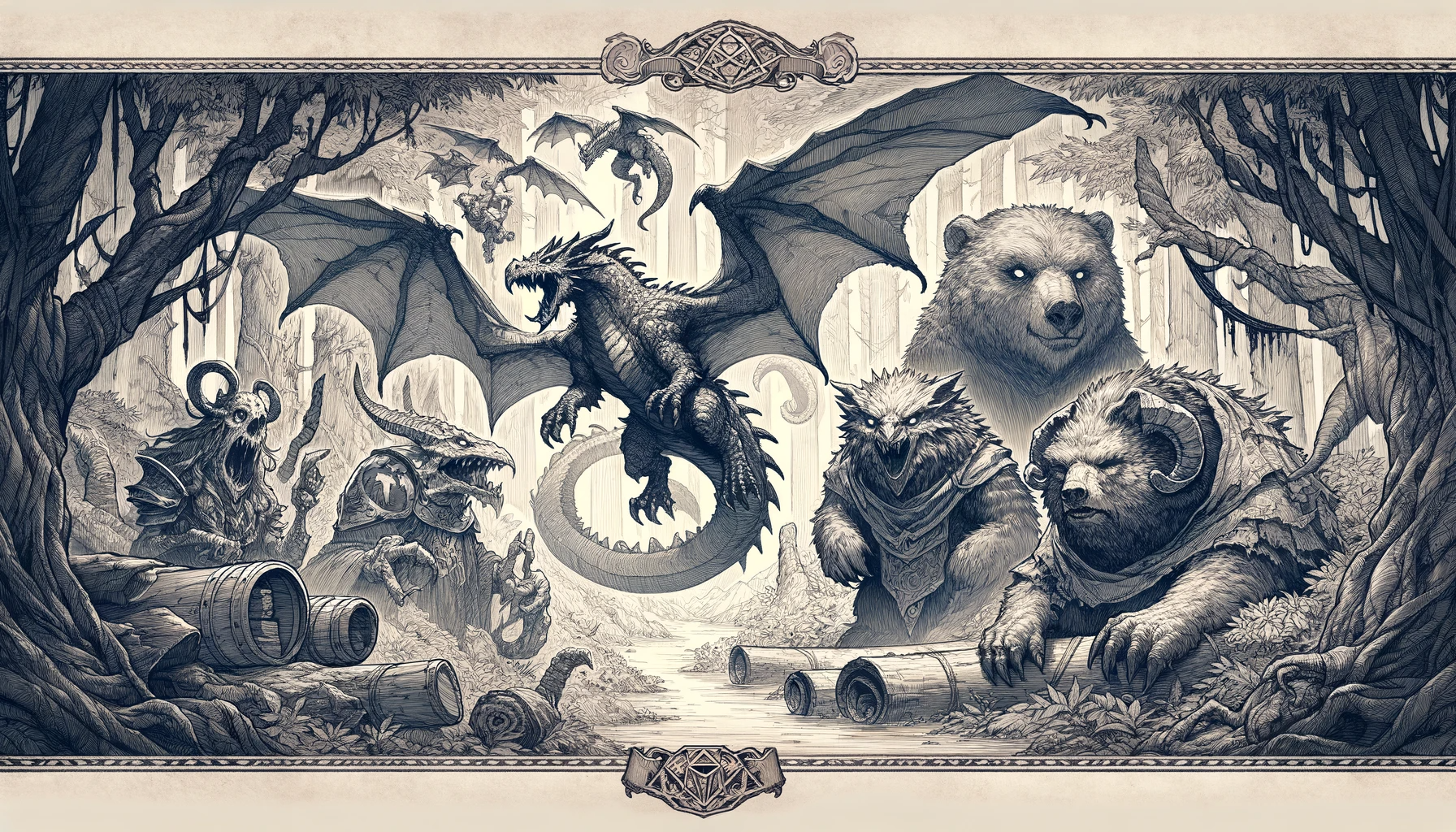TSR2115 - Chapter 8 - New Spells
Chapter 8 - New Spells
This chapter includes a variety of new spells that can be used to supplement the choices provided in the Player's Handbook. These spells expand the options for the schools of abjuration, divination, and necromancy, thus making these specializations more attractive to player characters
Spell Descriptions
The game statistics listed for the spells below follow the guidelines on page 129 of the Player's Handbook. All of these spells are acquired, memorized, and recorded in spell books as described on page 41 of the Dungeon Master's Guide and page 81 of the Player's Handbook.
Spell Components
Material Components
In accordance with the listings in the Player's Handbook, material components are given below for the spells that require them. The DM must decide the precise amounts of these materials, as well as any other details about them. For instance, colour spray requires a "pinch" of coloured sand--the DM decides what exactly constitutes a "pinch." Likewise, dancing lights requires a glowworm--must the glowworm be alive, or can it be a preserved specimen? Less fussy DMs can allow their wizards as much latitude as they wish with material components, as long as they meet the general requirements of the spell description.
Verbal and Somatic Components
The DM makes the decision regarding precise verbal and somatic components for any spell, although suggestions from players should be considered; specific verbal and somantic components are not required, but they add colour to the game by giving players a clearer idea of exactly what procedures must occur in order for their PC wizards to cast spells. Requiring specific components can also make for some challenging game situations. For example, if a wizard is gagged, he may be prevented from casting spells with spoken verbal components. Similarly, a wizard with his hands bound behind him may have problems casting a spell whose somatic component requires specific hand gestures. (See Chapter 6 for more information about impaired casters and spell components.) Verbal components can be single words, brief phrases, snatches of poetry, chants, or nonsense syllables. They can be spoken, whispered, shouted, or sung. Verbal components can also be groans, grunts, coughs, whistles, or any other vocally-produced sound.
Often, the verbal component will relate to the effect of the spell. For instance, the verbal component for feather fall might be the whispered word "float," while a low, eerie moan might work for detect undead. Dimension door might be the spoken word "open," while the verbal component for gust of wind might be a slow exhalation of air. Somatic components can be any type of physical gesture. For some spells, merely touching or pointing at the target or subject is sufficient. More elaborate gestures are suitable for higher-level spells. In many cases, the somatic component will relate to the spell's effect. For instance, the somatic component for audible glamer might require the caster to put his hand to his ear as if he were listening. Rapidly rubbing the hands together might suffice for chill touch, while wiggling the fingers like a spider might serve as the somatic component for web.
